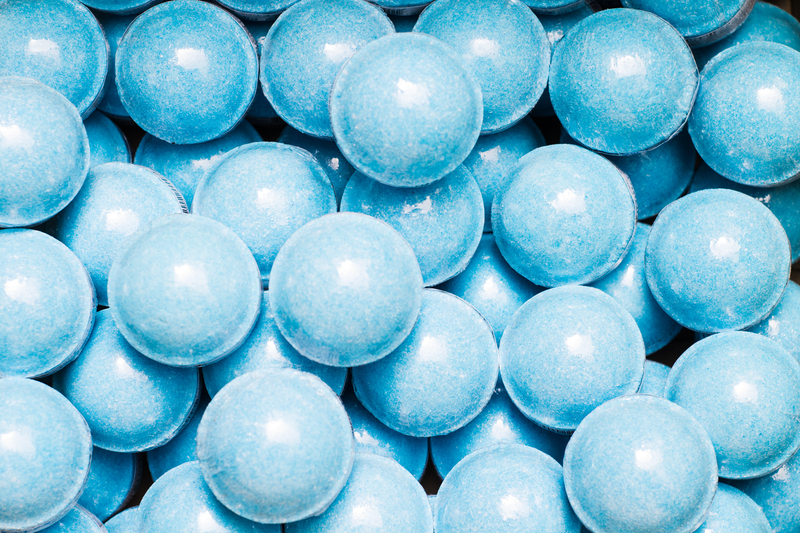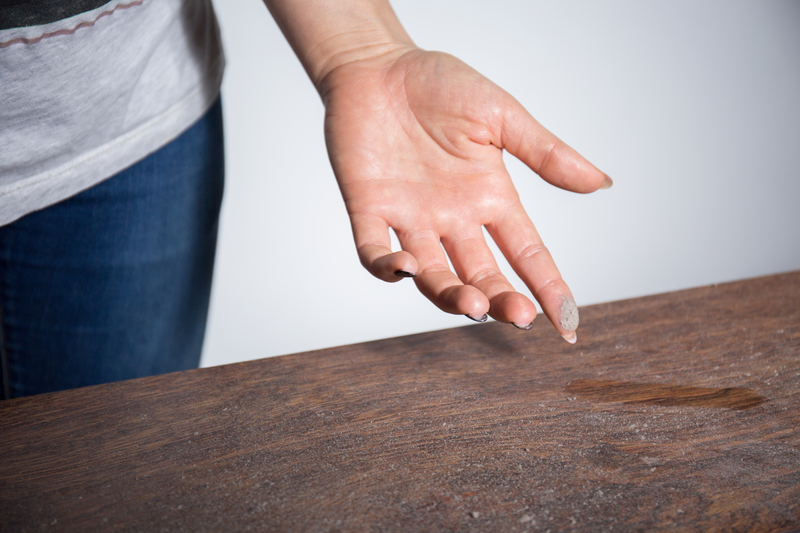Fresh and Clean: Expert Stovetop Cleaning Techniques
Posted on 12/06/2025
A spotless, sparkling stovetop is not only pleasing to the eye but also plays a crucial role in maintaining kitchen hygiene and appliance efficiency. Whether you love whipping up gourmet meals or enjoy a simple cup of tea, keeping your stovetop fresh and clean should be an essential part of your kitchen routine. In this comprehensive guide, we'll share the most effective stovetop cleaning techniques, expert-approved tips, and product suggestions so you can enjoy a gleaming cooking space every day.
Why a Clean Stovetop Matters
The importance of a clean stovetop goes beyond mere appearance. Built-up grime, grease splatters, and burnt-on food can harbor bacteria, cause unpleasant odors, and even serve as a fire hazard. Additionally, debris can affect the performance of your burners, wasting energy and potentially damaging your appliance. By mastering bespoke stovetop cleaning methods, you protect your investment and ensure food safety.

Understanding Your Stovetop Type
Before diving into expert cleaning techniques, it's essential to identify your stovetop type. Each material requires a unique approach to avoid any damage. Common stovetop types include:
- Gas Stovetops: Feature removable burners and grates. Grease and food residue can accumulate in crevices.
- Electric Coil Stovetops: Have raised coil burners that can be lifted for cleaning.
- Electric Glass or Ceramic Stovetops: Boast a flat, sleek surface that shows streaks and stains easily.
- Induction Stovetops: Similar to glass-ceramic but require specific care due to their specialized surface.
Knowing your stovetop material will help you choose the right cleaning agents and tools to keep your stove fresh and pristine.
Essential Supplies for Stovetop Cleaning
Equip yourself with the right tools and cleaners to tackle any mess with ease. Here's a list of must-have cleaning supplies for achieving a spotless stovetop:
- Microfiber cloths
- Non-abrasive sponges
- Soft-bristle brushes or old toothbrushes
- Baking soda
- Vinegar
- Lemon juice
- Mild dish soap
- Razor scraper (for glass cooktops)
- Degreaser or stovetop cleaner
- Gloves to protect sensitive skin
Pro Tip: Always check your stove's manual before using any new cleaning product. This ensures you avoid substances that could damage the finish or void your warranty.
Step-by-Step Guide: Stovetop Cleaning Techniques for Every Surface
1. Cleaning Gas Stovetops
Gas stovetops are beloved for their precise temperature control, but those removable grates and burners can be a magnet for tough, sticky messes. Here's how to deep clean your gas stove for a fresh, grease-free shine:
- Step 1: Ensure the burners are completely cool, then remove the grates and burner caps.
- Step 2: Soak grates and burner caps in hot, soapy water for at least 15-20 minutes. For tough grease, add a little baking soda to the soak.
- Step 3: Scrub all parts with a non-abrasive sponge or brush. Use a paste of baking soda and water to tackle stubborn, baked-on stains.
- Step 4: Rinse thoroughly and allow to dry completely.
- Step 5: Wipe the stovetop surface with a damp microfiber cloth, followed by a degreaser or a mixture of vinegar and water (equal parts).
- Step 6: Use a toothbrush to clear food debris from tiny crevices.
- Step 7: Dry everything and reassemble. Finish by buffing surfaces with a clean cloth for that extra shine.
2. Cleaning Electric Coil Stovetops
Electric coil stoves are dependable, but those coils can trap spills underneath, leading to odors and uneven heating. Here's how to keep them fresh and spotless:
- Step 1: Unplug the stove or ensure it's off to prevent shocks.
- Step 2: Lift and remove coils gently--don't tug too hard!
- Step 3: Wipe coils with a damp cloth (never immerse them in water).
- Step 4: Clean drip pans and the stove surface with warm, soapy water or a vinegar solution. For baked-on messes, let pans soak before scrubbing.
- Step 5: Dry parts thoroughly before reassembling.
Tip: For persistent stains, create a paste of baking soda and water. Apply, let sit, then scrub gently. Baking soda helps deodorize and lift stains without scratching.
3. Cleaning Glass and Ceramic Stovetops
Glass and ceramic stovetops look stunning, but show every streak and watermark. Use these stovetop cleaning techniques for a fresh, clean glass cooktop:
- Step 1: After ensuring the surface is cool, wipe away loose crumbs with a microfiber cloth.
- Step 2: Spray a 1:1 mixture of vinegar and water, or use a dedicated glass cooktop cleaner.
- Step 3: For tough, burnt-on spots, sprinkle baking soda, then gently lay a damp, warm towel over the area for 10-15 minutes. Wipe clean.
- Step 4: Use a razor scraper at a 45-degree angle to carefully remove stubborn residue. Never use force, as it may scratch the surface.
- Step 5: Buff dry with a clean, lint-free cloth to remove streaks and restore shine.
Note: Avoid abrasive pads or powders on glass and ceramic stoves--they can cause irreversible scratches.
4. Cleaning Induction Stovetops
Induction cooktops feature sensitive glass-ceramic surfaces. Keep them fresh and gleaming with these expert tips:
- Step 1: Only clean once the cooktop is completely cool and safe to touch.
- Step 2: Wipe the surface with a soft, damp sponge and a drop of mild dish soap. Avoid harsh chemicals or abrasive sponges.
- Step 3: For stubborn marks, a solution of baking soda and water can help. Alternatively, use a specialized induction stovetop cleaner.
- Step 4: Wipe away any residue with a clean, dry microfiber cloth.
Expert Insight: Clean spills promptly. Sugar-based spills can cause pitting on induction surfaces if left to harden.
Eco-Friendly Stovetop Cleaning Solutions
Eco-conscious cleaning doesn't mean compromising on effectiveness. Consider these greener options for a fresh stovetop:
- Baking soda: Its gentle abrasiveness lifts grime without scratching.
- Vinegar: Dissolves grease and acts as a natural disinfectant.
- Lemon juice: Cuts through odors and degreases naturally--plus, it leaves your kitchen smelling fresh and inviting.
- Hydrogen peroxide: Great for tough stains, mixed with baking soda. Always spot-test before widespread use.
**Pro Tip:** Create a basic DIY stovetop cleaning spray by combining 1 cup water, 1/4 cup white vinegar, and a few drops of dish soap in a spray bottle. Shake and spray onto your cooktop for quick, daily freshening.
Preventive Tips for a Fresh and Clean Stovetop
An ounce of prevention saves hours of elbow grease! Adopt these everyday habits to maintain a clean cooktop:
- Wipe up spills immediately, especially sugary or acidic spills, which can cause damage if left unattended.
- Use splatter guards when cooking foods prone to popping or splattering, such as bacon or tomato sauce.
- Perform a quick daily wipe-down using a damp microfiber cloth or eco-friendly cleaning spray after each use.
- Deep clean weekly to prevent build-up and keep your stovetop looking perpetually fresh and clean.
- Check and clean burner openings with a toothpick or small brush to ensure even heating.
- Line drip pans with foil (for electric stoves) to simplify cleaning.
Dealing with Stubborn Stovetop Stains
No matter how careful you are, some messes just won't budge. Here's how to handle stubborn stains and burnt-on gunk:
- Baking Soda Paste: For all stovetop types, a thick paste of baking soda and water applied to the stain, left for 15 minutes and scrubbed gently, can work wonders.
- Razor Scraper: For glass and ceramic tops, carefully use a razor held at a low angle to lift stuck-on debris. Never use this on metal parts or induction-specific surfaces unless stated by the manufacturer.
- Dedicated Cleaners: Sometimes, tough commercial stovetop cleaners are needed, especially for grease build-up. Always use products tailored for your cooktop material.
Stovetop Cleaning Mistakes to Avoid
An effective stovetop cleaning process also means knowing what not to do. Avoid these common mistakes:
- Using abrasive pads: These can scratch and permanently damage glass, ceramic, or induction surfaces.
- Letting spills linger: The longer food sits, the harder it is to remove--and it can stain or etch the surface.
- Spraying directly onto electric controls: Excess moisture can seep into electronics and cause malfunctions.
- Reassembling wet parts: Let all burners and attachments dry thoroughly before reassembly to avoid moisture problems.
Creating Your Stovetop Cleaning Routine
Consistency is the key to a perpetually fresh and clean stove. Here's a sample cleaning schedule:
- After Each Use: Quick wipe-down with a microfiber cloth to remove fresh spills and splatters.
- Weekly: Deep clean grates, burners, and drip pans; check for and address any build-up or stains.
- Monthly: Inspect and clean hard-to-reach areas, knobs, and behind/beneath the stove (if accessible).
Best Products for Stovetop Cleaning
- Barkeepers Friend: Excellent for glass and ceramic cooktops.
- Weiman Cooktop Cleaner: Specially formulated for glass/ceramic surfaces.
- Krud Kutter or Goo Gone Kitchen Degreaser: Great for tackling tough greasy build-up.
- Eco-Me Natural Kitchen Cleaner: An environmentally-friendly option.
These stovetop cleaning products can make a noticeable difference, but remember--sometimes the best results come from a combination of commercial and natural solutions.

Frequently Asked Questions About Stovetop Cleaning
Can I use vinegar on all stovetop types?
Vinegar is generally safe for most surfaces, but always avoid using it on aluminum or cast iron components, as it can cause corrosion. For glass, ceramic, and stainless steel, vinegar does a great job of degreasing and freshening.
How often should I deep-clean my stovetop?
Aim for a thorough deep clean at least once a week to keep your stove fresh, safe, and functioning optimally. Adjust the frequency depending on how much you cook.
What's the best way to remove burnt-on sugar?
Immediate action is best. For glass and induction cooktops, cover the area with a damp towel to soften, then gently scrape with a razor once cool. For gas stoves, soak removable parts in hot, soapy water, then scrub with a soft brush.
Summary: A Stovetop That Always Looks Fresh and Clean
Mastering expert stovetop cleaning techniques transforms your kitchen into a fresh, welcoming space where cooking becomes a joy. Whether you prefer DIY natural solutions or specialized cleaners, consistency is the secret. Address spills promptly, use the right tools for your stove type, and never underestimate the power of a simple daily wipe-down. With these tips, your stovetop will stay sparkling clean, ensure optimal performance, and help you create delicious meals with confidence.
Remember, a fresh and clean stovetop doesn't just look good--it keeps your kitchen safe, your appliance efficient, and your food tasting great. Happy cleaning!




